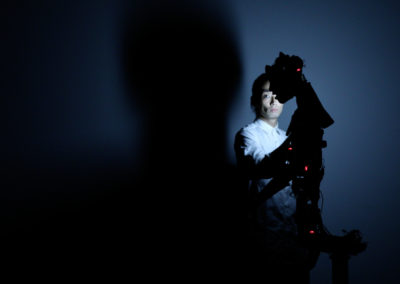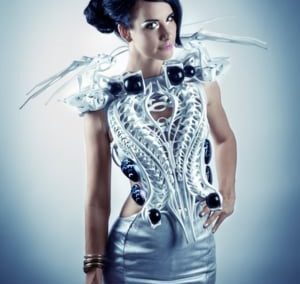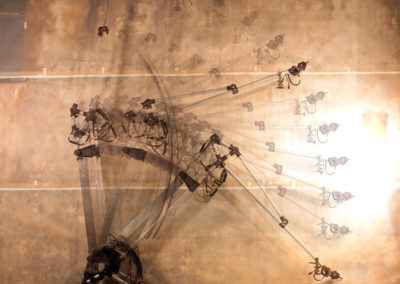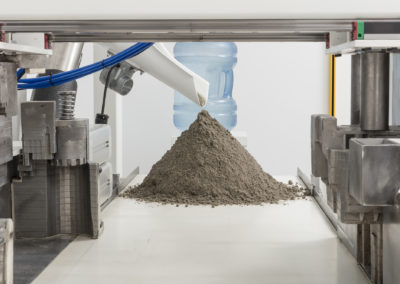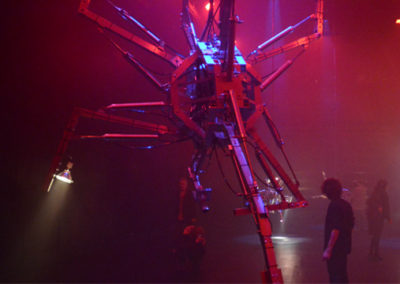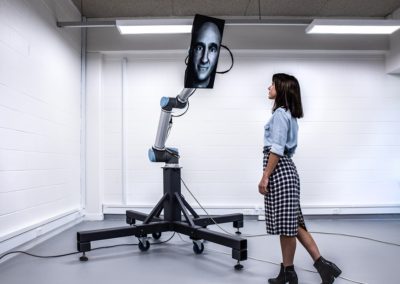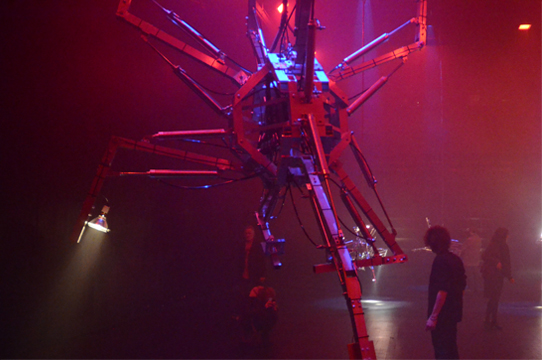
Mega Hysterical Machine, 2010
Bill Vorn (CA)
The Mega Hysterical Machine is a supersized version of the original Hysterical Machine. It is eight times the size of the Hysterical Machine in volume and weight. The first prototype of the Hysterical Machine (renamed Prehysterical Machine) has been presented at the Sentient Circuitry show at the Walter Philips Gallery (Banff) in 2002.
Since then, we have built ten more machines inspired by the prehysterical prototype that are part of a larger scale environment. The Mega Hysterical Machine is the latest version of the robot. The Mega Hysterical Machine has a spherical body and eight arms made of aluminum tubing. It has a sensing system, a motor system and a control system that functions as an autonomous nervous system (entirely reactive). It is suspended from the ceiling and its arms are actuated by pneumatic valves and cylinders. Ultrasound sensors allow the robot to detect the presence of viewers in the nearby environment.
It reacts to the viewers according to the amount of stimuli it receives. The perceived emergent behaviors of this machine engender a multiplicity of interpretations based on single dynamic pattern of events. The aim of this project is to induce empathy of the viewer towards characters which are nothing more than articulated metal structures. The strength of the simulacra is emphasized by perverting the perception of the creatures, which are neither animals nor humans, carried through the inevitable instinct of anthropomorphism and projection of our internal sensations, a reflex triggered by any phenomenon that challenges our senses.
Bio
Based in Montreal, Bill Vorn is active in the field of Robotic Art since 1992. His installation and performance projects involve robotics and motion control, sound, lighting, video and cybernetic processes. He pursues research and creation on Artificial Life and Agent Technologies through artistic work based on the Aesthetics of Artificial Behaviors.
He holds a PhD degree in Communication Studies from UQAM (Montreal) for his thesis on Artificial Life as a Media. He teaches Electronic Arts in the Department of Studio Arts at Concordia University (Intermedia program) where he holds the rank of Full Professor.
His work has been presented in multiple international events, including Ars Electronica, ISEA, DEAF, Sonar, Art Futura, EMAF and Artec. He has been awarded a Numix award (2016, Montreal), the Vida 2.0 award (1999, Madrid), the Leprecon Award for Interactivity (1998, New York), the Prix Ars Electronica Distinction award (1996, Linz) and the International Digital Media Award (1996, Toronto). He has worked in collaboration with many canadian artists (including Edouard Lock, Robert Lepage, Gilles Maheu, LP Demers and Istvan Kantor). He was cofounder of the electronic pop music band Rational Youth with Tracy Howe in 1981.
